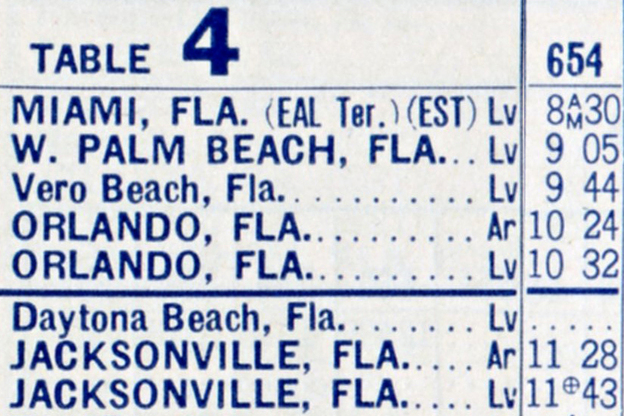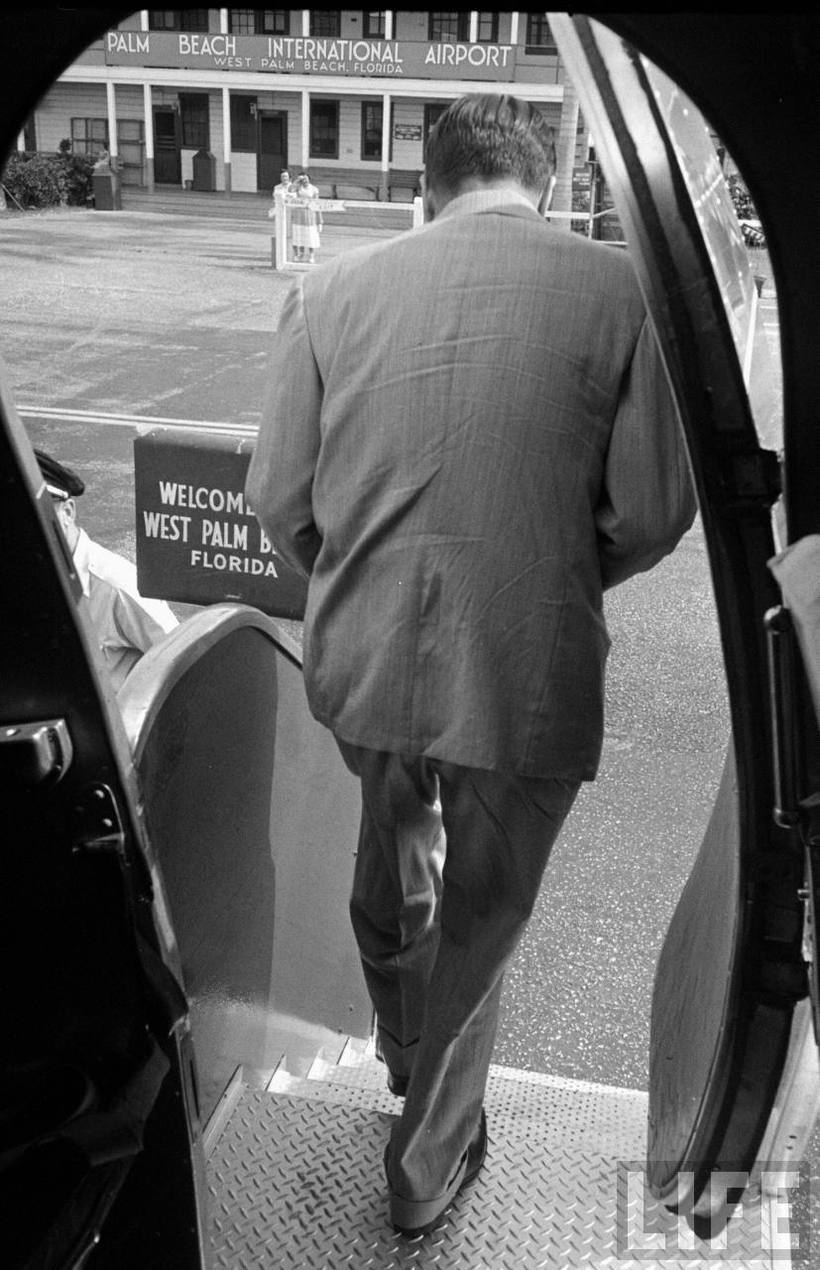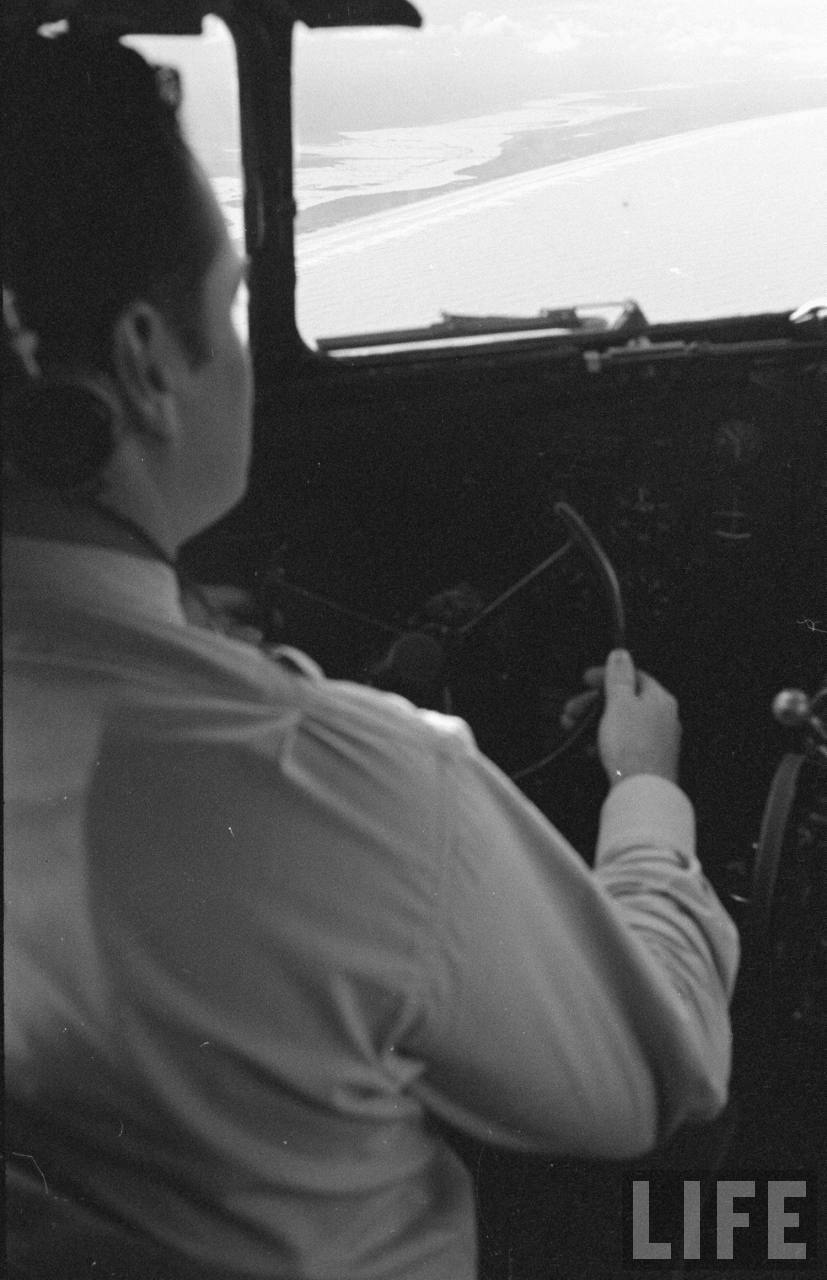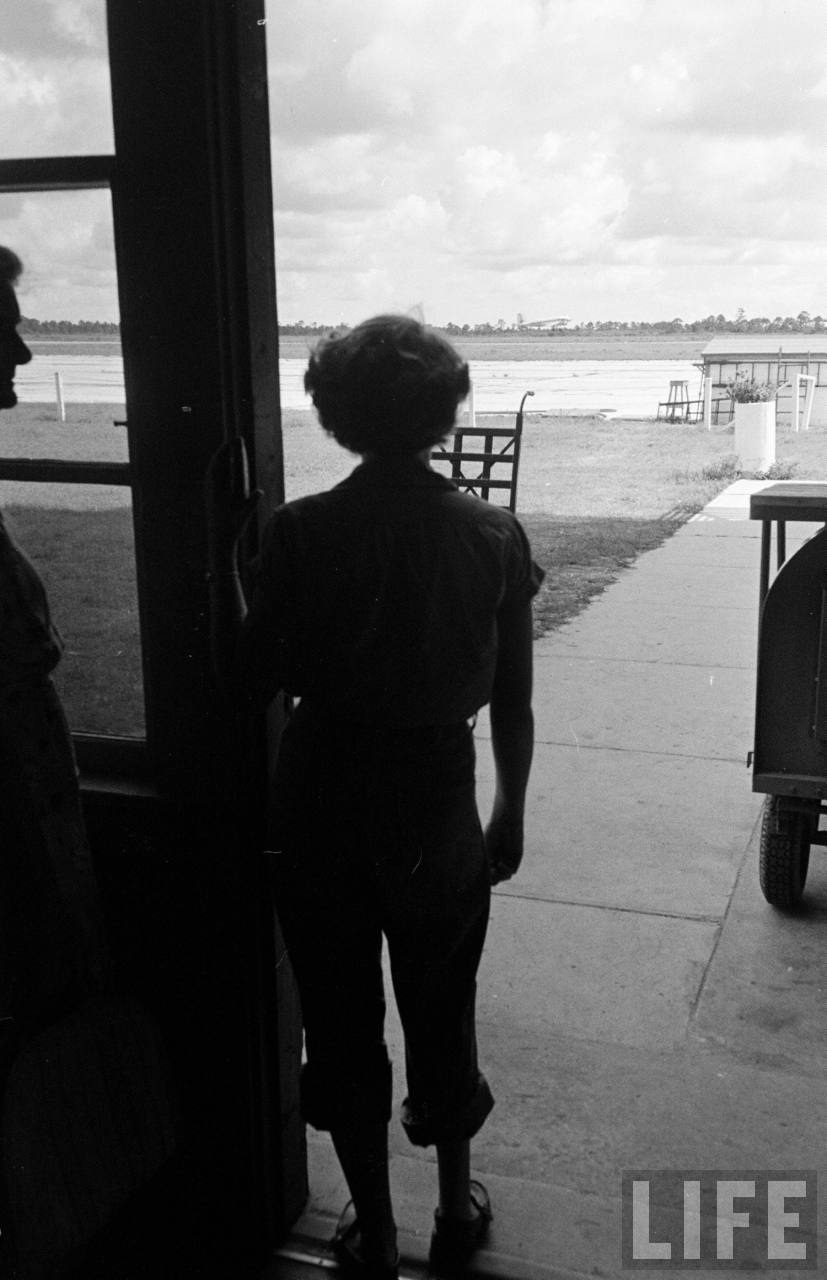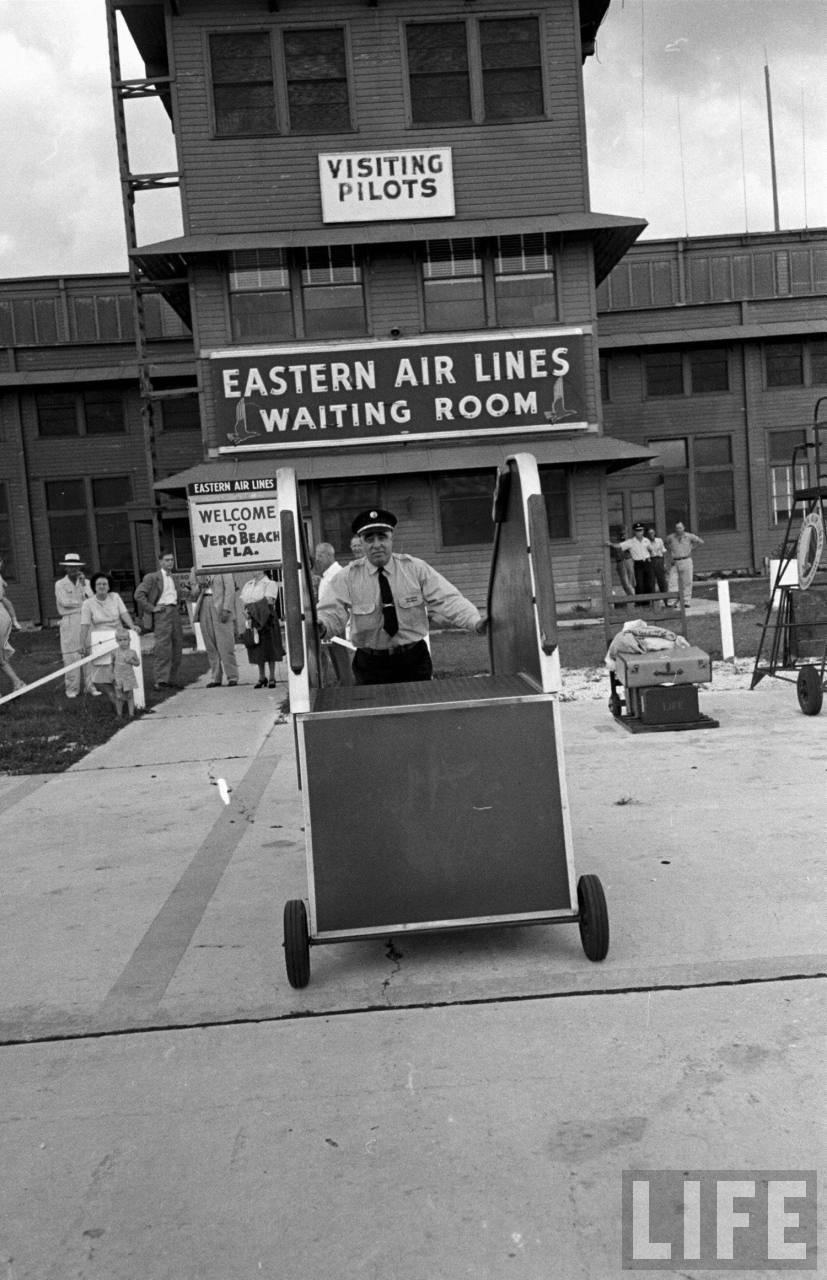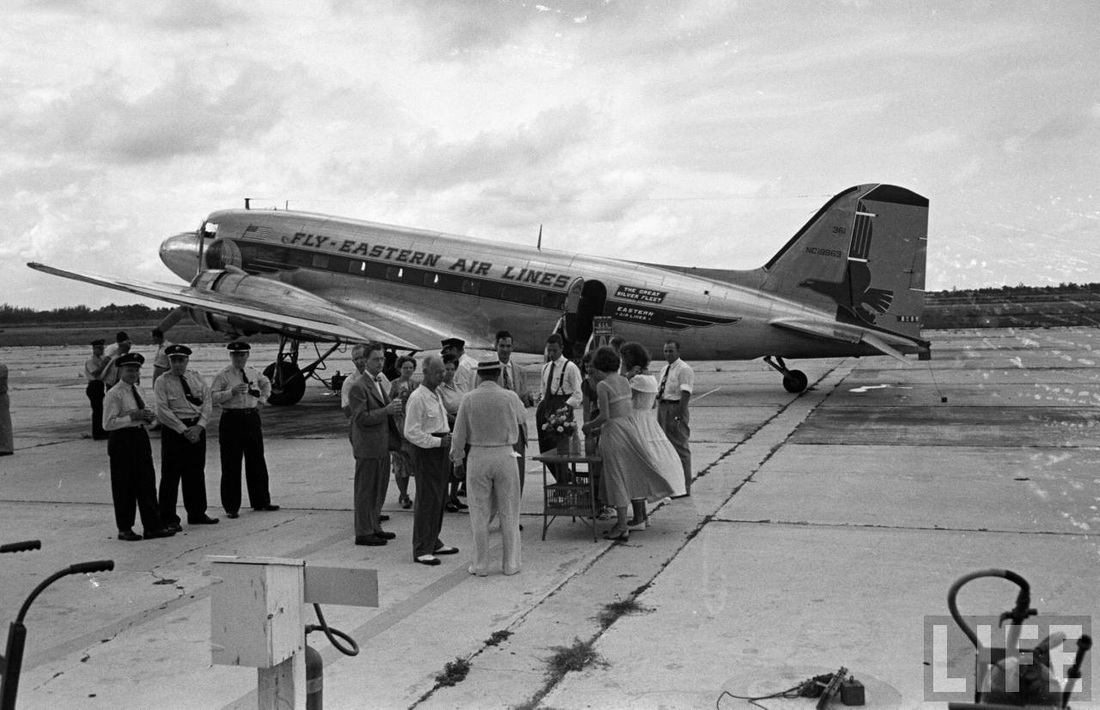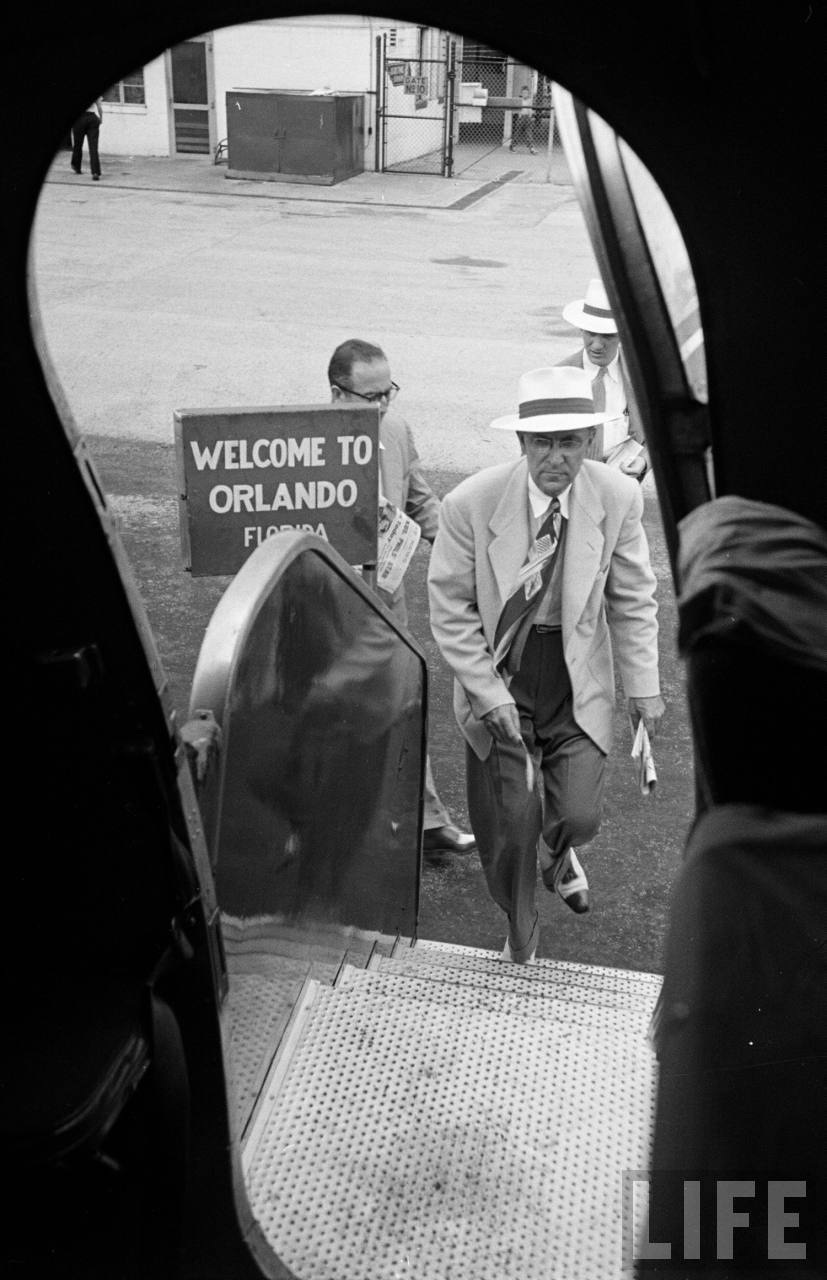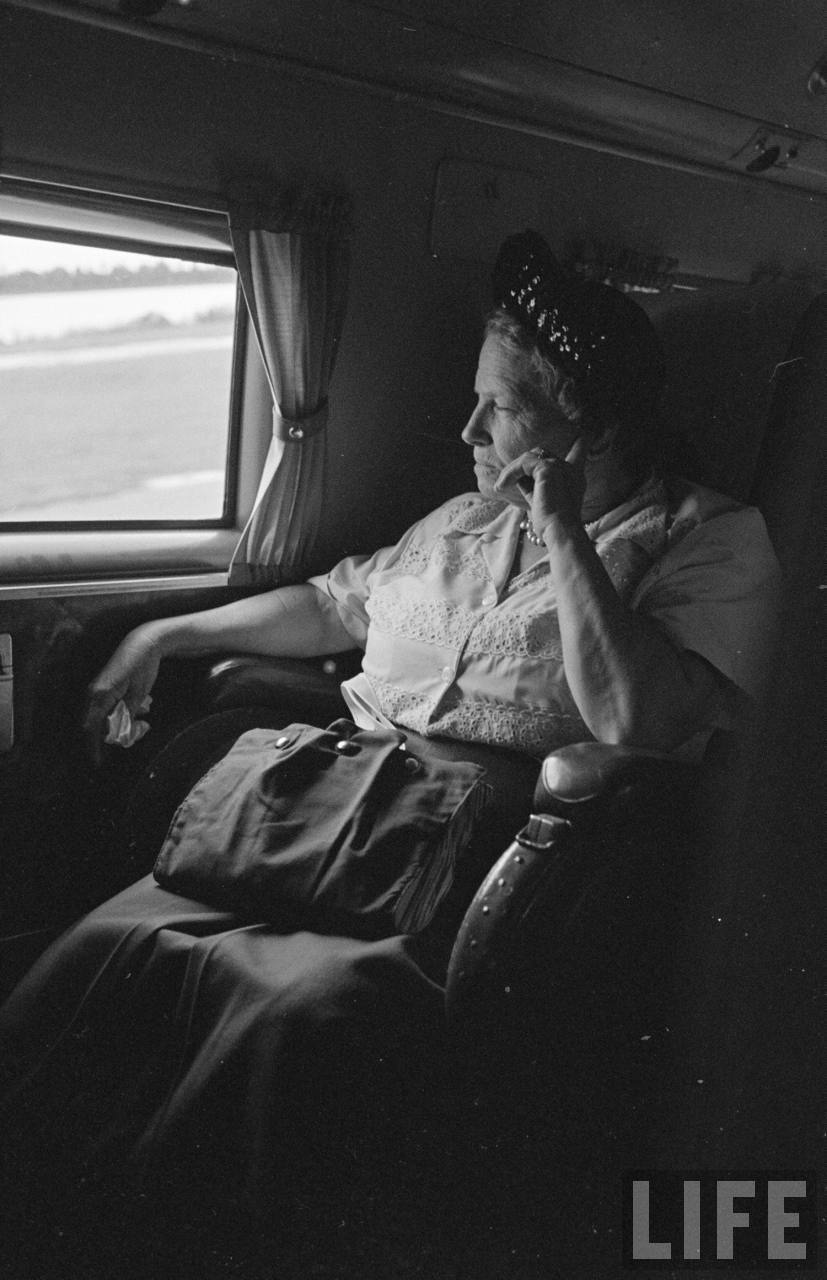FLYING EASTERN AIR LINES DC-3s IN 1949
PAGE ONE / PAGE TWO
The following photos were taken by Ralph Morse in June 1949 for a LIFE magazine article about Eastern Air Lines and its famed leader Eddie Rickenbacker. While only a handful of these photos ultimately appeared in the article, hundreds of unused shots can be found in the online archive hosted by Google. These cover all aspects of the typical day-to-day DC-3 operations, from the ticket counters to the cockpit and everything in between. Eastern operated over 80 DC-3s beginning in 1936 and continuing until the retirement of the last cargo C-47 in 1957.
I have to say, Google's LIFE archives are absolutely maddening to navigate; searches often yield no results, photos are frequently and obviously mislabeled, etc. Not a single one of the following photos were labelled with any info other than the date and photographer's name. It became a minor obsession of mine to piece these all together, to identify the locations and make sense of the dozens of random scenes. With the help of some old aerial photos, maps, postcards, a June 1949 Eastern timetable and lots of cross-referencing of photos, I think I figured it out. Enjoy...
I have to say, Google's LIFE archives are absolutely maddening to navigate; searches often yield no results, photos are frequently and obviously mislabeled, etc. Not a single one of the following photos were labelled with any info other than the date and photographer's name. It became a minor obsession of mine to piece these all together, to identify the locations and make sense of the dozens of random scenes. With the help of some old aerial photos, maps, postcards, a June 1949 Eastern timetable and lots of cross-referencing of photos, I think I figured it out. Enjoy...
Below: The final items are checked and loaded in preparation for the morning departure of flight 654 from Miami to Boston. This daily flight was an epic 13 hour and 18 minute trek up the east coast with stops in 13 cities along the way.
Here's an excerpt from Eastern's timetable effective June 1, 1949 showing stops within the sunshine state. From Jacksonville the flight continued to Augusta, GA, Columbia, SC, Charlotte, Greensboro-High Point, Washington, Baltimore, Atlantic City, Newark, Hartford-Springfield, and finally reached Boston at 9:48PM.
The door is shut and the stairs are pulled away.
View over the wing as flight 654 departs the EAL Terminal on 36th Street in Miami. The clock on the terminal reads 8:34.
Taxiing past Eastern's massive maintenance facilities on the northeast corner of Miami airport.
The DC-3s accommodated 21 passengers, 7 rows, 3 abreast. The seat pitch (distance between rows) was 39 inches and the seats were roughly 23 inches wide. By comparison, the economy class seat pitch on a Delta 757 is as low as 30 inches and the seats are 17 inches wide.
Less than 30 minutes after departing Miami, flight 654 makes its first stop at West Palm Beach.
A view of the magnificent gate at Palm Beach International. The aircraft could literally park beneath the palms.
Within minutes the DC-3 is back in the air and heading up the eastern coast of Florida to the next stop, Vero Beach.
Cockpit view of the approach to runway 29 at Vero Beach.
Here's Eastern's Vero Beach ticket counter in June 1949. The departure board at left shows 4 daily flights written in chalk: two southbound to Miami and two northbound to Jacksonville with flight 654 continuing on to Newark and Boston. The poster at far right shows the three aircraft types operated by Eastern at the time: the Lockheed Constellation, the Douglas DC-4 and the DC-3. This appears to be somewhat staged for LIFE magazine; the shadows suggest additional lighting was set up off the left side of the frame. From what I can tell from related photos, the photographer spent a few hours around Vero Beach and waited for the next northbound DC-3, flight 656.
The woman and girl seen in the previous photo watch the landing of an Eastern DC-3 through the open door of the Vero Beach airport terminal.
"Welcome to Vero Beach, FLA." The station manager wheels the stairs to the aircraft.
The door is opened and tied to the railing of the stairs. Flight 656 makes stops at Orlando and Daytona Beach before terminating at Jacksonville.
Inserting the rudder lock. This is a great illustration of how massive a DC-3 rudder is.
The battery cart is wheeled into place. Ron Alexander, owner of DC-3 N28AA, explains, "the battery cart is used to start the engines or to do maintenance when power is needed. The receptacle for the plug is in the center of the fuselage just forward of where the nose sections ends and the center section that the wings bolt on begins. It is between the engines so it requires a lot of care when unplugging and moving it away from the airplane with the engines running."
A table decorated with fresh flowers was set up on the ramp and refreshments were offered to passengers during the brief stop at Vero Beach. This aircraft (NC19963, serial number 2260) was destroyed six weeks later, on July 20, 1949, in a mid-air collision with a US Navy Grumman Hellcat that was performing aerobatic maneuvers over Chesterfield, NJ.
After a few minutes, the door is shut, the engines come to life and flight 656 departs Vero Beach for Orlando.
On approach to runway 4 at Orlando Municipal Airport. This airport was renamed Herndon Airport in 1961 and is now known as Orlando Executive Airport (ORL). The airport layout is considerably different today. To the right of the runway is Lake Underhill which is now crossed by SR-408.
Orlando airport had been used as an Army air base during World War II and a proper passenger terminal was not built until 1951. In the meantime, this hangar and the adjoining building served as a makeshift terminal.
Welcome to Orlando! Passengers board for the short hops to Daytona Beach and Jacksonville.
Starting the takeoff roll from Orlando.
Looking down the sloped aisle as passengers deplane.



